Japan has beautiful nature locations that are breathtaking -- couple
that with man-made wonders that clearly illustrate Japan’s long history
and rich culture -- and you have a tourist destination that is one of
the finest on earth.
If you are planning on taking a trip to Japan, these ten destinations should not be overlooked because they are representative of some of the most beautiful locations in the Land of The Rising Sun.
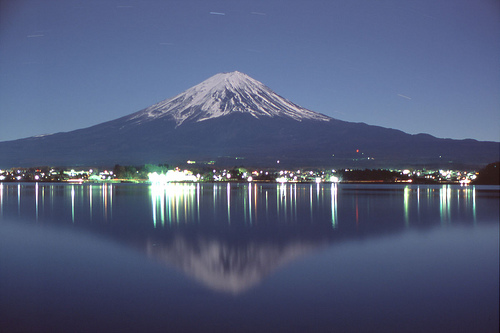
If there ever was an iconic image and destination that clearly defines Japan, it would have to be Mt. Fuji. The almost perfectly symmetrical volcano is considered the national symbol of Japan. Mt. Fuji is so iconic that it has been depicted in various works of art that date back hundreds of years. Mt. Fuji is not just beautiful from afar, adventurous travelers can see how beautiful the volcano is up close by joining various climbs up the mountain. Because of the nature of its topography, Mt. Fuji can be approached from all sides. The official climbing season is in July and August. You can also elect to climb outside of the climbing season but take note that access to it during the off-season is drastically cut.
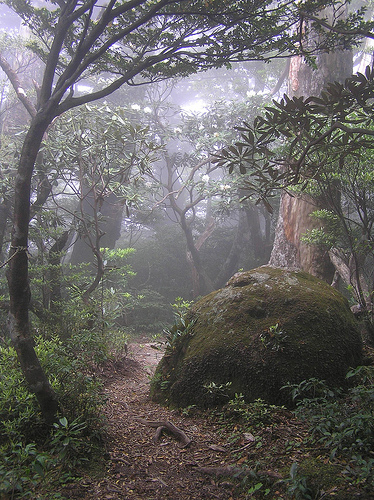
Located off Kyushu’s southern coast, Yakushima is an island that has become a popular destination for travelers who love the outdoors and being in the midst of nature. Yakushima is extensively covered by a beautiful cedar forest called Yakusugi Forest, which is also home to some of the oldest living trees in Japan. There are trees here that are more than 1000 years old. It has even been speculated that the oldest of the trees may be 7000 years old.
Although Yakushima has been logged quite all throughout Japan’s history for use in making cedar shingles during the Edo period, it has survived this and has now become a UNESCO World Natural Heritage Site.
Nature lovers will have fun hiking and camping in the area while communing with the towering trees.
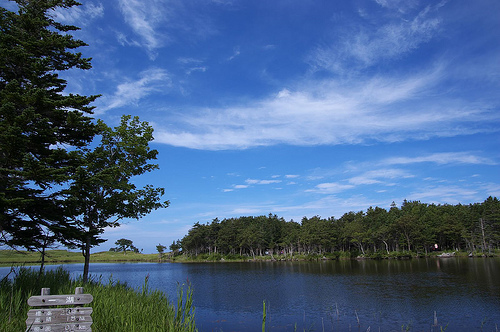
The famous Shiretoko National Park is located on the Shiretoko Peninsula on the eastern part of Hokkaido. This is a fairly isolated area with roads that only go in about three fourths up the peninsula. Even the northern tip can only by seen by boat or by going on a multi-day trekking tour.
Shiretoko is considered the most beautiful of all the national parks in Japan. Because of its relative isolation, the Shiretoko Peninsula has become the home of a very diverse number of animal species including deer, brown bears, and foxes. During winter, the coast gets drift ice. Shiretoko is the southernmost region in the northern hemisphere to experience this.
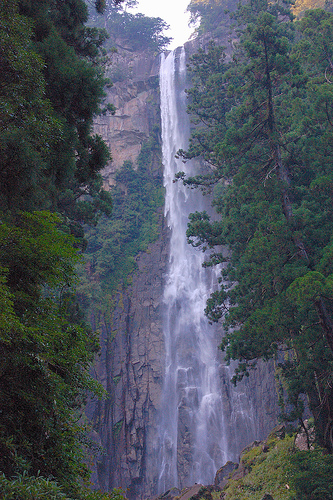
Located near the south of Kyoto and Nara is the Kii Mountain Range. Its proximity to two of the capital cities that were seats of power in ancient Japan means that it is steeped in history. The mountains are located within the Kii peninsula that goes outwards to the Pacific Ocean. This mountain range is considered one of the spiritual places of the country and, according to legend, is the place where the gods of Shintoism and Buddhism lived. Because of this, the mountains have become a sacred place for many groups. There are three pilgrimage routes around the mountain as well as three sacred sites.
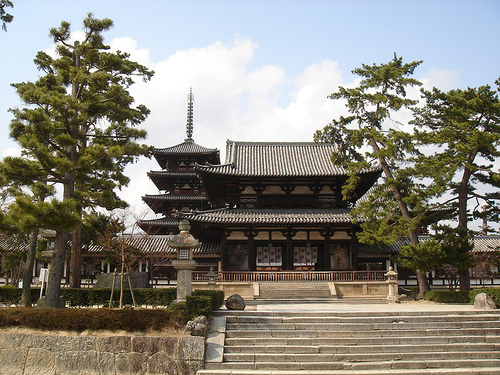
The Horyuji Temple was ordered built by Prince Shotoku in 607. It was destroyed but a new temple was built in 711. The temple is one of the oldest temples in Japan and has become a national treasure. It is composed of a main hall and a five storied pagoda. Along with the central gate, it is one of the world’s oldest surviving wooden structures. There is a newly built building beside the temple that now houses an Buddhist art collection from the 6th and 7th century.
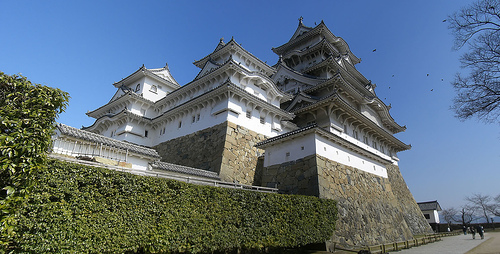
Considered as Japan’s most magnificent castle, Himeji Castle is fortunate for not having been destroyed or damaged by wars, fires or natural calamities. The castle has largely survived unscathed and is in its original state.
The castle has undergone many changes. In the 14th century, a fort was built around the castle site and succeeding clans that lived there would periodically enlarge it. The castle as we see it today was finally finished in 1609.
Himeji Castle is one of the best examples of a Japanese castle and its lush opulence inside (with wooden interiors) is worth checking out.
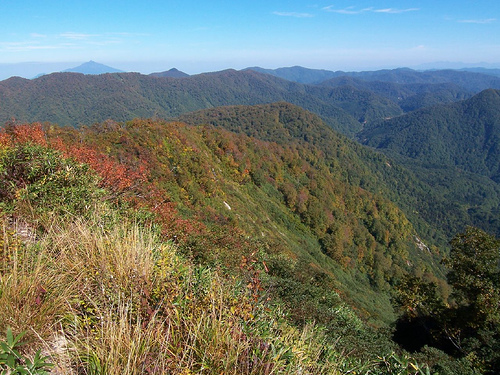
The Shirakami Sanchi or Shirakami Mountain Range straddles the Akita and Aomori prefectures and has a land area of 1300 square kilometers. The mountain range has become an important location in Japan because its natural resources are being protected. For one, one of the few beech forests in the country are located here. Some of the trees in the area are 2000 years old. The altitude of the mountain range has also resulted in the proliferation of alpine flora. But aside from these, the Shirakami Sanchi is also the location of some very interesting sites like the Akaishi River, which is considered the most beautiful piece of water scenery in the country.
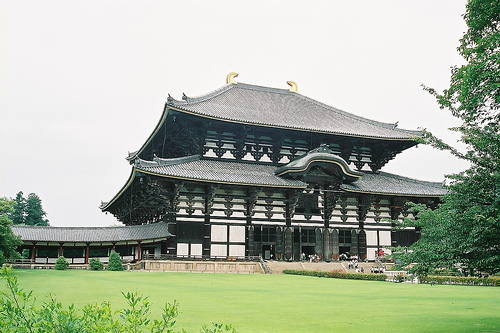
Nara was the old capital of Japan back in the year 710. Because of its important political significance during that time, many important structures and monuments were built here. Most of them are still standing.
The monuments of Nara generally refer to the various ruins found in the area, which include six temples and a primeval forest. Excavations done in the area have resulted in the discovery of various structures including the palace site and Sujakumon Gate. The six temples located in the area are: Todaiji, Kasuga-Taisha, Kofukuji, Yakushiji, Toshodaiji and Gangouji. At present there is a concerted effort to preserve these historic edifices.
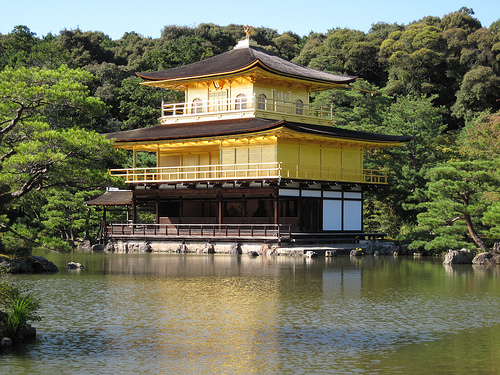
The distinctive Kinkakuji Temple, or Golden Pavilion Temple, is one of the more popular destinations in Kyoto. The building is a very beautiful structure and is made very unique because of the gold foil that was used to envelope the whole structure. The building was built in 1397 as a retirement residence for Shogun Yoshimitsu. The present Kingakuji has been rebuilt because the building was burned down twice during the Onin War in the 1400s and then again in 1950.
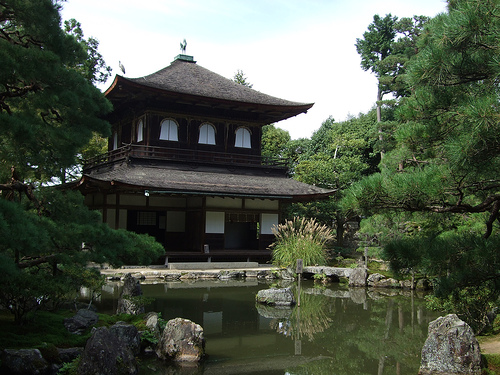
Ginkakuji Temple, or The Temple of the Silver Pavilion, is a zen temple that is also located in Kyoto. Like Kinkakuji Temple, this pavilion was constructed as a place of rest and meditation for the Shogun. The temple was originally going to be covered with silver foil but the whole process took so long that the plans never got to be fulfilled.
Thanks for come
If you are planning on taking a trip to Japan, these ten destinations should not be overlooked because they are representative of some of the most beautiful locations in the Land of The Rising Sun.
1. Mt. Fuji

If there ever was an iconic image and destination that clearly defines Japan, it would have to be Mt. Fuji. The almost perfectly symmetrical volcano is considered the national symbol of Japan. Mt. Fuji is so iconic that it has been depicted in various works of art that date back hundreds of years. Mt. Fuji is not just beautiful from afar, adventurous travelers can see how beautiful the volcano is up close by joining various climbs up the mountain. Because of the nature of its topography, Mt. Fuji can be approached from all sides. The official climbing season is in July and August. You can also elect to climb outside of the climbing season but take note that access to it during the off-season is drastically cut.
2. Yakushima

Located off Kyushu’s southern coast, Yakushima is an island that has become a popular destination for travelers who love the outdoors and being in the midst of nature. Yakushima is extensively covered by a beautiful cedar forest called Yakusugi Forest, which is also home to some of the oldest living trees in Japan. There are trees here that are more than 1000 years old. It has even been speculated that the oldest of the trees may be 7000 years old.
Although Yakushima has been logged quite all throughout Japan’s history for use in making cedar shingles during the Edo period, it has survived this and has now become a UNESCO World Natural Heritage Site.
Nature lovers will have fun hiking and camping in the area while communing with the towering trees.
3. Shiretoko National Park

The famous Shiretoko National Park is located on the Shiretoko Peninsula on the eastern part of Hokkaido. This is a fairly isolated area with roads that only go in about three fourths up the peninsula. Even the northern tip can only by seen by boat or by going on a multi-day trekking tour.
Shiretoko is considered the most beautiful of all the national parks in Japan. Because of its relative isolation, the Shiretoko Peninsula has become the home of a very diverse number of animal species including deer, brown bears, and foxes. During winter, the coast gets drift ice. Shiretoko is the southernmost region in the northern hemisphere to experience this.
4. Kii Mountain Range

Located near the south of Kyoto and Nara is the Kii Mountain Range. Its proximity to two of the capital cities that were seats of power in ancient Japan means that it is steeped in history. The mountains are located within the Kii peninsula that goes outwards to the Pacific Ocean. This mountain range is considered one of the spiritual places of the country and, according to legend, is the place where the gods of Shintoism and Buddhism lived. Because of this, the mountains have become a sacred place for many groups. There are three pilgrimage routes around the mountain as well as three sacred sites.
5. Horyuji Temple

The Horyuji Temple was ordered built by Prince Shotoku in 607. It was destroyed but a new temple was built in 711. The temple is one of the oldest temples in Japan and has become a national treasure. It is composed of a main hall and a five storied pagoda. Along with the central gate, it is one of the world’s oldest surviving wooden structures. There is a newly built building beside the temple that now houses an Buddhist art collection from the 6th and 7th century.
6. Himeji Castle

Considered as Japan’s most magnificent castle, Himeji Castle is fortunate for not having been destroyed or damaged by wars, fires or natural calamities. The castle has largely survived unscathed and is in its original state.
The castle has undergone many changes. In the 14th century, a fort was built around the castle site and succeeding clans that lived there would periodically enlarge it. The castle as we see it today was finally finished in 1609.
Himeji Castle is one of the best examples of a Japanese castle and its lush opulence inside (with wooden interiors) is worth checking out.
7. Shirakami Sanchi

The Shirakami Sanchi or Shirakami Mountain Range straddles the Akita and Aomori prefectures and has a land area of 1300 square kilometers. The mountain range has become an important location in Japan because its natural resources are being protected. For one, one of the few beech forests in the country are located here. Some of the trees in the area are 2000 years old. The altitude of the mountain range has also resulted in the proliferation of alpine flora. But aside from these, the Shirakami Sanchi is also the location of some very interesting sites like the Akaishi River, which is considered the most beautiful piece of water scenery in the country.
8. Historic Monuments of Ancient Nara

Nara was the old capital of Japan back in the year 710. Because of its important political significance during that time, many important structures and monuments were built here. Most of them are still standing.
The monuments of Nara generally refer to the various ruins found in the area, which include six temples and a primeval forest. Excavations done in the area have resulted in the discovery of various structures including the palace site and Sujakumon Gate. The six temples located in the area are: Todaiji, Kasuga-Taisha, Kofukuji, Yakushiji, Toshodaiji and Gangouji. At present there is a concerted effort to preserve these historic edifices.
9. Kinkakuji Temple

The distinctive Kinkakuji Temple, or Golden Pavilion Temple, is one of the more popular destinations in Kyoto. The building is a very beautiful structure and is made very unique because of the gold foil that was used to envelope the whole structure. The building was built in 1397 as a retirement residence for Shogun Yoshimitsu. The present Kingakuji has been rebuilt because the building was burned down twice during the Onin War in the 1400s and then again in 1950.
10. Ginkakuji Temple

Ginkakuji Temple, or The Temple of the Silver Pavilion, is a zen temple that is also located in Kyoto. Like Kinkakuji Temple, this pavilion was constructed as a place of rest and meditation for the Shogun. The temple was originally going to be covered with silver foil but the whole process took so long that the plans never got to be fulfilled.
Thanks for come

